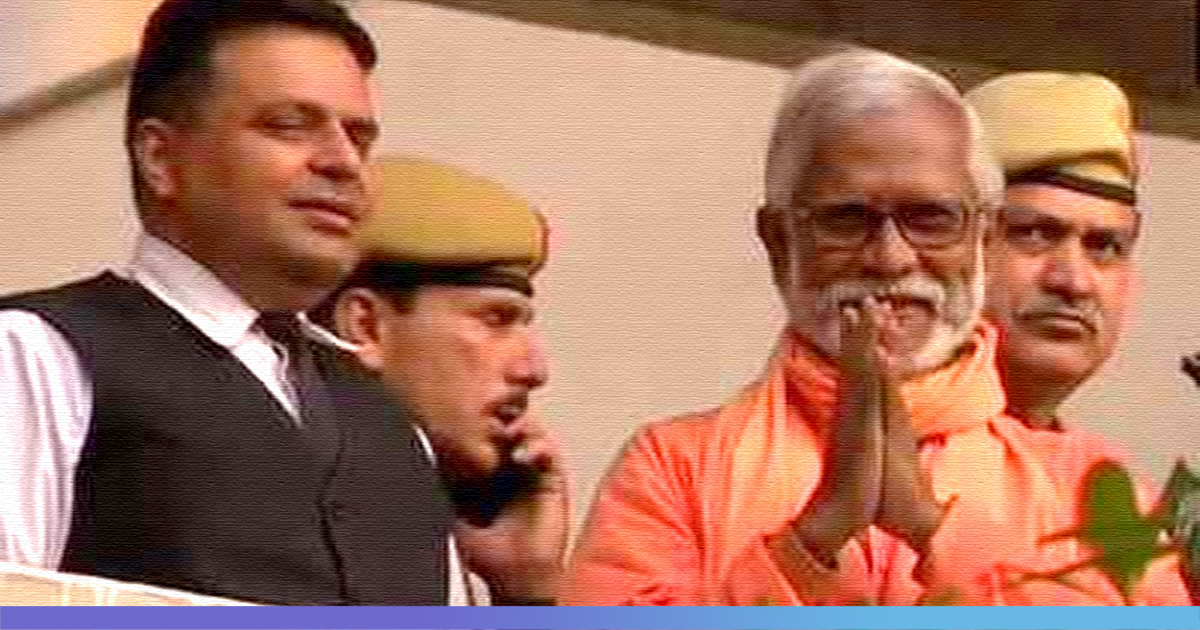
Judge Slams NIA For Failing To Provide "Crucial Evidence" To Prosecute Samjhauta Blast Accused
29 March 2019 11:21 AM GMT
A special National Investigation Agency (NIA) court in Panchkula on March 20 acquitted all the four accused — Swami Aseemanand, Lokesh Sharma, Kamal Chauhan and Rajinder Chaudhary— in the Samjhauta Express blast case of 2007. The court had deferred the case multiple times before it finally gave the verdict. The 2007 blast had resulted in the death of 68 people, including 10 Indians.
Just a few days after the verdict was out and people started criticising the court’s decision, the Panchkula special court judge, who gave the judgement, lashed out at NIA for failing to produce enough evidence and letting the reasons behind the dastardly attack go unpunished. Special NIA court judge Jagdeep Singh said the “best evidence” was “withheld” by the prosecution and was not submitted as evidence in the court, reported The Indian Express.
He further said that some of the independent witnesses were not even examined. The once who were examined were termed “hostile” if they did not support the prosecution’s case.
What happened?
The Indo-Pak Samjhauta Express runs between Lahore and Attari every Thursday and Monday. It covers a total distance of 29 km on the stretch and the train’s international route comprises of a 3.2 km stretch between Wagah and Attari in India. The train operates from Delhi every Wednesday and Sunday.
Who is Swami Aseemanand?
Born in West Bengal and a graduate in physics, Aseemanand joined the Rashtriya Swayamsevak Sangh (RSS) at an early age. He went on to work for the RSS full-time as a pracharak in 1977.
Between 2006 and 2008, a series of bomb attacks hit civilian targets around India. These attacks were sectarian in nature and Aseemanand has been charged with plotting five of these attacks. The attacks collectively killed 119 people.
Aseemanand is accused of planning the 2007 Ajmer Sharif Dargah blast, the Mecca Masjid blasts, the 2006 Malegaon blasts, and the 2007 Samjhauta Express bombings. The Central Bureau of Investigation (CBI) arrested Aseemanand on 19 November 2010 for his involvement in the Mecca Masjid bombing.
Aseemanand confessed to the alleged acts before the Metropolitan Magistrate on 18 December 2010. He stated that he and some others were involved in bombings at various Muslim religious places as they wanted to answer every Islamist terrorist act with “a bomb for bomb’’ policy. Aseemanand explained to the magistrate about the “involvement of a few Hindutva leaders, including himself, in planning and executing a series of terror attacks”. Later, he said that the statements were obtained from him under pressure.
What is the Samjhauta Express blast?
On 18 February 2007, a blast rocked the Samjhauta Express that killed 68 people and injured several others. The blast took place near the Dewana railway station in Haryana’s Panipat district, while the train was on its way to Attari on the India-Pakistan border.
The case was initially taken up by a Special investigation team (SIT) on February 2007 but was later handed over to the National Investigative Agency (NIA). An investigation initially concluded that the blast was aimed at the Pakistani civilians.
In its charge sheet, the NIA named, Naba Kumar Sarkar also known as Swami Aseemanand, Sunil Joshi, Lokesh Sharma, Sandeep Dange, Ramchandra Kalasangra, Rajinder Chaudhary and Kamal Chauhan as accused. While one of the masterminds, Sunil Joshi was found dead in 2007, Ramchandra Kalasangra and Sandeep Dange could never be traced. Swami Aseemanand is out on bail. The NIA investigated 290 witnesses and 30 of them turned hostile.
 All section
All section













